Ten Causes of Legionella in a Building’s Water Supply
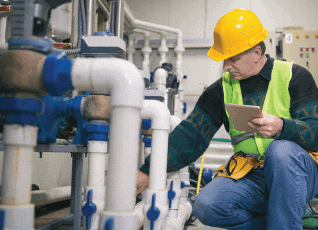
Water from municipal water systems is often contaminated with small amounts of bacteria, parasites, fungi, and other organisms that escape disinfection methods. The low amounts of these organisms generally do not cause disease but can pose a threat in complex or multi-story plumbing systems due to various factors. Here are the most common. Water temperature fluctuations Legionella survives in a wide range of water temperatures but grows rapidly at temperatures of 77°F-113°F. To keep water outside this ideal range, it’s essential to keep hot water hot and cold water cold. Factors that can lead to ideal Legionella temperatures include: Biofilm Biofilm is a slimy buildup in pipes made up of bacteria, fungi, sediments, and nutrient deposits. It can grow continuously on any surface exposed to moisture and is an ideal environment for organisms to grow, offering protection from disinfectant. Water stagnation Areas of plumbing systems with poor or no water flow can create areas of standing water. Biofilm grows, and water reaches ambient temperatures, creating an ideal environment for organisms to grow. Sediment Sediment is a collection of minerals and natural materials introduced into building water systems from the municipal water supply. It damages pipes and other water-using equipment, shields bacteria from supplemental disinfection, provides nutrients to organisms in the water and uses up disinfection unnecessarily. Scale When minerals from the water collect inside a water system, it forms a hard, rock-like buildup known as scale. Scale forms a barrier that interferes with heating and cooling the water, which can lead to unpredictable and/or unacceptable water temperatures. It also provides an ideal environment for Legionella and other waterborne pathogens to grow. Changes in water pressure If water pressure inside your building is affected for any reason, it may dislodge biofilm, releasing bacteria into the rest of the water system. Low levels of disinfectant Normal building processes like heating, storing, and filtering can reduce the amount of disinfectant in the water, allowing bacteria to grow. Construction Vibrations can dislodge biofilm and scale — and the bacteria living in it — into a building’s water supply. Water main breaks A water main break can cause a sudden change in water pressure, which can dislodge biofilm. In addition, a water main break often results in extra dirt or unwanted matter in the water. When these contaminants show up, they use the disinfectant supply and further compromise building water. Municipal water supply Changes in the municipal water supply can increase sediment and affect disinfectant levels, potentially leading to bacteria growth.
Five Practices to Prevent a Legionella Outbreak and Control Waterborne Pathogens
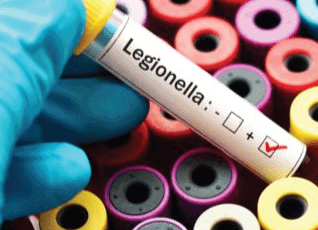
The Centers for Disease Control and Prevention (CDC) has reported between 8,000 and 18,000 cases of Legionnaires’ disease annually in the United States caused by the spread of the Legionella bacteria. How can you protect your facility from Legionella and other waterborne pathogens? Here are five practices that you can implement to prevent bacterial outbreaks in your building’s water system and protect your patients, guests, and facility. 1. Evaluate sustainability Choose a systemic, long-term solution for your facility that is environmentally friendly, cost-effective, easy to maintain, and focuses on preventing the growth and spread of Legionella and other waterborne pathogens. Prioritize methods that provide residual protection while requiring little personnel maintenance and monitoring and avoid scale, corrosion, and biofilm growth. 2. Consider your environment Consider a plan that has no detrimental effects on the immediate plumbing environment and the individuals it serves, such as the patient, guests, and employees. You will need to evaluate where waterborne pathogens thrive. Most have a presence and are amplified in non-circulating loops, stored water systems, and water biofilms, and they tend to increase in hot-water environments. Pathogens are transmitted through aerosolization, ingestion, and contact. Knowing these facts, identify areas or devices in your building where Legionella or other waterborne pathogens might grow to prevent and eliminate colonization. 3. Avoid hazards Many water disinfection methods create other hazardous conditions in the long term. Avoid practices that require hazardous handling, storage, or continuous monitoring. Protect yourself from carcinogens and other harmful health effects caused by conventional disinfection methods. Choose a non-corrosive solution that does not damage the distribution system and is effective throughout the entire water system. 4. Select vetted technologies Select a Legionella prevention method with a proven track record, EPA registered, NSF approved, and ETL/UL certified. LiquiTech’s copper-silver ionization technology is certified by the agencies. Our filters have been extensively evaluated by relevant microbiological test protocols in independent laboratories and have passed all rigorous third-party tests to ensure complete compliance. 5. Develop a water management program Developing and maintaining an effective water management program is a process that requires review and proactivity. Follow these six steps to creating an effective water management plan:
Strategies For Protecting Your Hospital From Legionella Growth
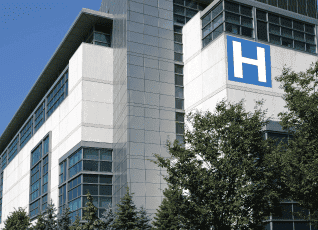
Legionnaires’ disease, a deadly but preventable form of pneumonia, is a risk in healthcare facilities across the country. The Legionella bacterium causes this infection and is found naturally in fresh, warm water sources. However, it can increase in the plumbing of large buildings such as hospitals. For this to happen, Legionella must first grow and then spread through tiny, contaminated water droplets that people can inhale as a mist, steam, or vapor. Legionella is dangerous because it can sometimes go undetected and can contaminate medical equipment. Patients breathe in airborne mist from contaminated water droplets which could lead to an outbreak of Legionnaires’ disease. It is important to note that most healthy people who are exposed to Legionella bacteria don’t go on to develop the disease. Individuals who have compromised immune systems are more vulnerable to the illness. Symptoms of the ailment include fever, chills, fatigue, muscle aches, and more. The first recorded case of a Legionnaires’ disease outbreak was in 1976 at the American Legion convention in Philadelphia. More than 180 individuals who attended the convention got sick with a form of pneumonia, and 29 of them died. Soon after this event, the bacterium was discovered and acquired its name: Legionella. But how can you protect your healthcare facility from Legionella growth? Legionella prevention measures Keeping the water supply in healthcare facilities safe is crucial to protecting patients, staff, and guests from contracting Legionnaires’ disease. Here are some ways facility managers can prevent Legionella bacterial growth in hospitals: Trust LiquiTech’s water management solutions Looking to eradicate waterborne pathogens from your building’s water system? LiquiTech can help. We serve many industries, including the healthcare sector. We strive to create healthier communities by improving water quality with our comprehensive water solutions. Our core products include copper-silver ionization, point-of-use filtration, point-of-entry filtration, and water management plans. We also provide risk assessments, testing and validation, remote monitoring, and flexible maintenance plans. Our advanced technology and EPA approval keep us ahead of other water management companies. When you turn to us for water treatment services, you’ll have peace of mind knowing that your patients, staff, and guests are protected from dangerous waterborne pathogens.
Controlling Legionella Using Copper Silver Ionization
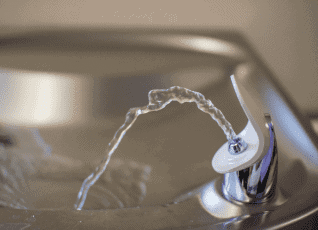
Hospitals and healthcare facilities need to do everything possible to prevent contagious diseases from spreading. One of the most critical ways they can do this is by providing water that has been treated to kill harmful pathogens such as bacteria and viruses. However, there are other environments in which clean water is an absolute necessity. Hotels, commercial properties, and other buildings where many people congregate are at risk for the growth and proliferation of disease-causing contaminants such as Legionella, the bacteria responsible for Legionnaire’s disease. Controlling Legionella and other infectious intruders should be a high priority, no matter what type of property you own. In the past, owners and managers were limited in their options, often forced to turn to chlorination and the use of other chemicals to control the levels of Legionella in their water supplies. Not only is this difficult to manage, but it can also lead to its own health risks if not adequately monitored. This is why many facility managers have turned to a more successful alternative: copper-silver ionization. What is copper-silver ionization? This process involves distributing ions into a building’s plumbing to kill any pathogens that may be present. The ions produced by the LiquiTech ionization process are cationic, surface-active, and a potent biocide. The treatment action is attributable to the positively charged copper and silver ions forming electrostatic bonds with negatively charged sites on microorganism cell walls. These electrostatic bonds create stresses that lead to distorted cell wall permeability, disrupting the intake of life-sustaining nutrients and ultimately leading to cell lysis. Bacteria are killed rather than merely suppressed, as with alternative Legionella treatment methods. The accurate dose-rate control system maintains precise ion levels, providing residual protection and prevention of recontamination. What are the benefits of this process? Compared to methods that depend on chemicals, copper-silver ionization offers several advantages. These include: LiquiTech: The experts in copper-silver ionization As the recognized leader in the application of this technology, LiquiTech is your go-to source for copper silver ionization, as well as many other services related to battling waterborne pathogens. To learn more about what we can do for your facilities, get in touch with us today.
As Legionnaires’ Disease Cases Surge, Lawsuits Pile Up

By Brett Walton, Circle of Blue Elliot Olsen has been litigating Legionnaires’ disease cases for a dozen years and he’s never been as busy as today. “I’ve got more lawsuits going now than I ever have,” said Olsen, a lawyer with Siegel Brill, a firm based in Minneapolis. Olsen, who represents people nationwide sickened with the pneumonia-like illness, said that Legionnaires’ cases account for about one-third of his current work load. There is plenty of work to go around. The number of people who fall ill with Legionnaires’ disease in the United States is soaring, up 33 percent in 2018 compared to the previous year, according to data released this week by the Centers for Disease Control and Prevention. The disease, which is not contagious, is caused by inhaling water droplets that are contaminated with Legionella bacteria. It frequently sends people to the hospital, and it kills about one in 11 people infected. In tandem with the rising disease burden is a corresponding increase in the number of lawsuits, according to lawyers involved in these cases. Most legal actions are civil lawsuits against building owners or their maintenance contractors for negligence or failure to protect guests on their property, a personal injury claim akin to a slip-and-fall case, lawyers say. But criminal charges against Michigan health officials in the wake of 12 deaths in Flint linked to Legionnaires’ disease awakened the public health community to the legal risks of inaction against a disease that was first identified four decades ago but has grown in prominence only in the last few years. The involuntary manslaughter charges were dropped this summer by the Michigan Attorney General’s Office, but the shock has not worn off. In light of the flurry of litigation, observers wonder whether legal liability will prompt changes in building management and oversight practices that are not yet mandated by law. Few jurisdictions in the country have any rules for preventing the spread of the bacteria that proliferate in building water systems. New York, for instance, regulates cooling towers, a common source of bacteria transmission, and the federal government has ordered hospitals and nursing homes that receive Medicare payments to inspect and test their water systems. Beyond that, regulations are scarce for America’s deadliest waterborne disease. “Generally speaking, this is one area where the potential for liability can drive self-regulation,” Lance Gable, an associate professor at Wayne State University Law School who studies public health law, told Circle of Blue. “Litigation sometimes gets out ahead of regulations imposed by government. The threat of litigation can drive behavior, and drive behavior in the absence of regulation.” Civil Cases Dominate the Courts Examples abound of legal actions that stem from alleged mismanagement of building water systems. Last month, a man who contracted Legionnaires’ disease at the Mountain State Fair, in western North Carolina, sued the vendors whose hot tubs are suspected as the transmission source. The hot tubs were on display at an exhibition hall at the Western North Carolina Agricultural Center. In September, the family of a woman who died from Legionnaires’ disease after staying at the Watkins Glen Harbor Hotel, in the Finger Lakes region of New York, sued the company that owns the hotel for alleged negligence in building maintenance. And in August, a woman sued the Rush Oak Park Hospital, located in the Chicago suburbs, alleging the hospital was negligent and failed to warn patients about the bacteria. For Olsen, these alleged failures are a familiar refrain. He sees the same mistakes repeatedly in his cases: building managers are ignoring their water systems. “What I see most, in terms of a water management plan, is nothing — they have no water management plan in place,” said Olsen, who has been working on Legionnaires’ disease lawsuits for about 12 years. “So they have no strategy whatsoever to protect their building from being colonized by Legionella. That’s the most common thing I’ve seen.” Olsen tries to prove that whoever is in charge of the building’s water supply, either the owner or a contractor, did not adequately maintain the system to prevent Legionella growth. The bacteria are present in lakes and rivers, but they multiply to the point where they become a health risk in warm, stagnant water — water that can be found inside building plumbing. Health department officials investigate outbreaks, which are two or more cases linked to the same source. Those inquiries can be a boon to people filing a lawsuit if the health department investigation turns up solid evidence that connects the bacteria at the source to the bacteria that sickened individuals. If there is no direct link to a bacteria source, having a water management plan in place that adheres to one of the industry standards is a good defense for a building owner in the event that someone gets sick, according to Russell Nassof, founder of the health risk consulting firm RiskNomics. Environmental investigations for Legionnaires’ disease are complex and a “smoking gun” link between source of transmission and patient is hard to trace, Nassof said. Evidence that a building is checking its chlorine levels and water temperatures and periodically flushing its pipes is firm ground to stand on. “If you have potential exposure points out there, different exposure points, and you have one, for example, with good documentation and a water management plan that has been maintaining their building pristinely, then in all likelihood you would start to look at other sources for potential liability,” Nassof told Circle of Blue. Tom Bernier, a partner at Goldberg Segalla, is a defense lawyer in Legionnaires’ cases. Typical clients include building owners and maintenance contractors, but he has recently seen liability lawsuits extend to general contractors, architects, plumbing engineering people, and contractors that put in potable water systems. When constructing a defense for his clients, Bernier seeks to call doubt on the direct link between building and plaintiff. Are there other potential sources of exposure? Is the bacteria of the same genetic type in both the building and the sick person? Could the person’s ailments be
How to Prevent Legionella and other Waterborne Bacterial Outbreaks in your Healthcare Facility
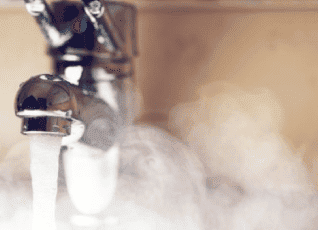
Hospital water distribution systems can experience contamination that is not accounted for by the water treatment system provided by the city, so extra precautions must be taken in the healthcare industry to prevent an outbreak of waterborne bacteria and pathogens. These dangerous bacterial microorganisms include Legionella, Mycobacteria, Pseudomonas, and Klebsiella. They pose a severe threat to the safety of medical facilities and can contribute to the unnecessary spread of disease in the form of hospital-acquired infections (HAIs). What does bacterial contamination mean for healthcare? According to the CDC, exposure to Legionella in a healthcare setting, such as hospitals and nursing homes, can be especially severe. Legionella can ubiquitously proliferate in water facilities, especially hot-water systems, contaminating all equipment that uses water. Legionnaires’ disease, obtained from inhaling aerosolized water infected with Legionella bacteria, is a prime example of a preventable hospital-acquired infection (HAI). Legionella in a healthcare setting would attack physically vulnerable individuals who already suffer from an underlying illness or a weakened immune system. Silver: the gold standard solution Healthcare and infection control professionals can preventatively address and reduce the risk of Legionella propagation in their facility by adopting a copper-silver ionization system. This system has been appraised as the gold standard and the most clinically effective prevention and remediation solution for Legionella and other waterborne pathogens. How does copper-silver ionization work? Scientists are now adding a silver coating to antibiotics because of its ability to maximize bacterial eradication. The subcellular structure of bacteria includes a wall that makes some bacteria impenetrable, aiding their survival against antibiotics. However, scientists have proven that adding a silver coating to antibiotics maximizes their eradication power, thus yielding a more potent antiseptic. This is due to silver nanoparticles’ antimicrobial properties, which are enhanced by an electric field. LiquiTech’s solution We disinfect water systems through copper-silver ionization, which penetrates through the wall of the bacteria, irreversibly damaging its key enzyme and inactivating all traces of the bacteria. This is achieved by applying an electric current across silver and copper-coated electrodes into the bacterial culture to produce nanoparticles that enhance antibiotic action at the anode. Systemically introducing these disinfectant ions in a facility water system, such as the plumbing infrastructure, inactivates Legionella and other harmful waterborne pathogens deeply embedded in the biofilm, thereby improving water quality. This method is non-corrosive and does not damage the distribution system. Comparatively, this method requires much less chemical use and maintenance than chlorine disinfection, which requires extensive dosage measurements. Copper-silver ionization also better protects the lids and pumps than ozone disinfection, which imposes a high voltage and requires comprehensive transportation and storage efforts. Moreover, unlike the other methods, the efficacy of copper-silver ionization is not dependent on water temperature, making it effective throughout an entire water system. Copper-silver ionization does not involve any disinfection byproducts. It has a longer-lasting local affectivity than most other disinfectants because it remains in the water for an extended period. Adopt a zero-tolerance policy for Legionella and other waterborne bacteria, and protect your patients, employees, and facility by preventing bacterial outbreaks in your facility water system. Be proactive about prevention by letting LiquiTech help you create a safe, secure, and clean environment accommodating your unique needs.
CDC Legionella Report Calls for Action
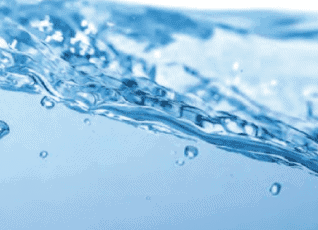
LiquiTech applauds CDC for its stand on water management plans and Legionella testing. Noting a 370% increase in Legionnaires’ disease outbreaks since 2000, the Centers for Disease Control and Prevention (CDC) has called on building owners and property managers to monitor better and control the risks associated with their drinking and service water systems. “As a company that has specialized in Legionella prevention and remediation for more than a quarter century, we have witnessed firsthand the increase in Legionnaires’ disease across the country, leading to needless suffering and loss of life,” said Tory Schira, LiquiTech’s CEO. “We commend the CDC for making such a clear statement that water management planning, environmental testing, and control measures are needed to stop the scourge of a deadly disease.” Analyzing 27 CDC investigations of Legionnaires’ disease outbreaks, the CDC found that potable (drinking) water distribution systems were the most frequent source of exposure, at 56% of cases, followed by cooling towers (22%), hot tubs (7%), industrial equipment (4%) and a decorative fountain (one outbreak). Potable water sources accounted for two-thirds of healthcare-associated outbreaks. Forty-four percent of the outbreaks investigated by the CDC were at hotels and resorts, 19% at long-term-care facilities, and 15% at hospitals (the others were among senior living facilities, workplaces, and the community). “We are happy to see an acknowledgment that cooling towers are far from the only way people contract Legionnaires’–a common misconception,” Tory said. “Cooling towers were certainly the source of some serious outbreaks, including in New York City last year, but as we at LiquiTech have found over the course of many years, drinking water is the bigger threat to human health and demands action to protect people and organizations.” The CDC specifically endorsed the new ASHRAE 188 building code standards, which establish minimum requirements for managing the risk for Legionella growth and transmission in building water systems. Gaps in maintenance that could be addressed with a water management program to prevent Legionnaires’ disease outbreaks were described in 85% of 27 investigated outbreaks. In most outbreaks, inadequate water disinfectant levels and temperatures in the optimal range for Legionella growth were observed; implementing a functional water management program could address these deficiencies through routine monitoring of disinfectant levels and water temperature, the CDC found. The CDC released a new toolkit for building owners and managers, “Developing a Water Management Program to Reduce Legionella Growth & Spread in Buildings: A Practical Guide to Implementing Industry Standards.” Based on ASHRAE 188, the toolkit provides a checklist to help identify if a water management program is needed, examples to help identify where Legionella could grow and spread in a building, and ways to reduce the risk of Legionella contamination.Specifically, the CDC, for the first time, endorsed environmental testing for Legionella to validate the effectiveness of control measures and noted that such testing should be provided in any healthcare facility, as older and sicker people are most susceptible to contracting Legionnaires’ disease. “We have waited a long time for the CDC to recognize the need for testing the water,” Tory said. “You cannot effectively carry out a successful water management program if you don’t know the nature of your problem. What gets measured can get addressed.” All of the elements in the toolkit and ASHRAE 188 standards are addressed by LiquiTech’s complete water management solutions, Tory noted. The company employs a comprehensive approach to secure water systems against various waterborne pathogens. “We are ready to help any building owner or facilities manager meet the challenges laid down by the CDC and ASHRAE,” he said.